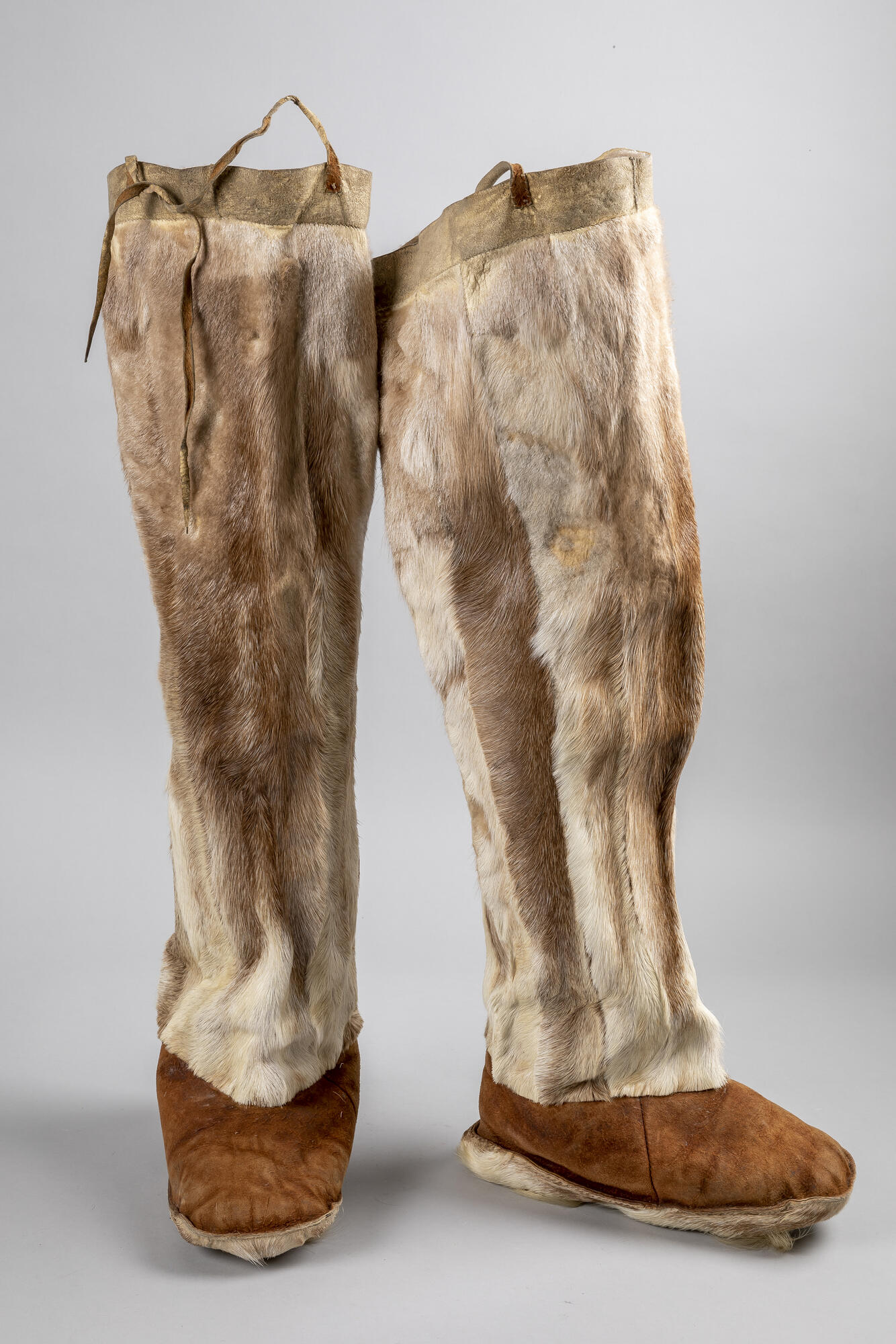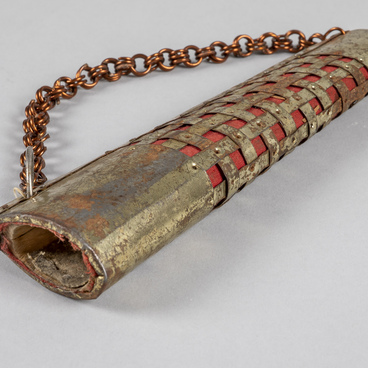These are men’s winter boots called nyriki. Nyriki is the Russian word for boots made of fur worn by the Yugan Khanty. The sole is sewn directly to the bottom of the boot. The inner part is made of fur, with summer versions having a trimmed pile. The calf of the boot is made of deerskin, or sometimes from dense fabric with quilting and insulation. A ribbon with multi-colored stripes is sewn between the ankle and the calf.
Festive shoes are more elegant. They feature a patterned stripe made of dark and light rovduga — tanned deer skin — sewn to the calf and the foot of the boot. The foot part features an embroidered pattern made with deer or elk neck hair. The pattern is painted with a dye made of larch bark. The pattern for men’s and women’s boots is different. The middle of the calf has a 5–7 cm tall triangle above the stripe.
The rear upper part of the boot calf is cut for ease of wearing. Straps are attached to the front of the calf to hold the boot in place. Nyriki boots are tied with colored straps at the back of the knee. Men usually weave them from colored threads and decorate them with tassels.
Both summer and winter versions of this boot have an insole made of grass, which is harvested in summer.
The technique of mosaic on leather and fabric is used to this day to make nyriki boots and deserves special mention. Creating such a mosaic requires mastery of another technique. Paint made of a decoction of larch bark or with the addition of deer blood is used to paint a pattern on the rovduga leather. Next, this pattern is outlined with a strap made of white deer neck hair which was stitched with tendon threads. While applying a pattern to the leather required the use of paint, deer fur already had natural dark and light tones.
Patterns are best “cut”, as the craftswomen say, from smooth dense fur taken from the feet of hooved animals. Such fur has always been scarce and had to be used sparingly. This led to the invention of a waste-free method, in which the light and dark pieces of fur were laid one over the other and the same pattern was cut from the different-colored pieces of fur simultaneously. The dark stripe was sewn into the light one, laying the seams with narrow stripes of colored cloth. The end result was a mirrored contrasting pattern with equal parts background and pattern.
When working with fabrics, especially paper ones, another method of decorating is used — applique, which is, sewing patterned stripes of fabric to a larger object. If the rovduga and fur direct the imagination of the craftswomen to search for new lines and shapes, fabrics present them with the opportunity to more fully express their vision of the world in color.






